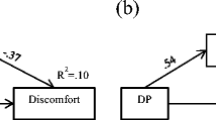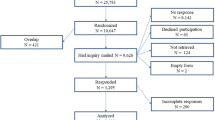Abstract
The evidence from the recent financial crisis in the USA indicates the importance of ethical decision making in the banking and finance industry. This study surveyed 90 banking and finance professionals and students in Vietnam to examine the differences in their ethical decision making. The questionnaire consisted of eight vignettes describing practical ethical dilemmas which banking and finance professionals may face in their daily work. We found significant differences in ethical decision making between these two groups in their overall ethical scores and in four out of eight vignettes. We also conducted a 3-h ethics training programme for these professionals and students and found that teaching ethics was more effective for students than working adults in the banking and finance industry. These findings are important as they show how banking and financial institutions can make workplace environments more conducive to ethical decision-making by enhancing ethics education for both newcomers and existing professionals.
Similar content being viewed by others
References
Allen, W. R. (2005). Examining the impact of ethics training on business student values. Education and Training, 47(3), 170–182.
Atkinson, A. S. (2002). Ethics in financial reporting and the corporate communication professional. Corporate Communications, 7(4), 212–218.
Bathula, H., & Gaur, S. S. (2011). Teaching ethics to international business students: impact, response and directions. Retrieved November 15, 2012, from http://www.crie.org.nz/research-papers/WP%2023-Teaching%20Business%20Ethics%20Hanoku%202.doc.
Boatright, J. R. (2010). Finance ethics: critical issues in theory and practice. New York: Wiley.
Bodkin, C. D. (2007). University students’ perceptions regarding ethical marketing practices: affecting change through instructional techniques. Journal of Business Ethics, 72(3), 207–228.
Božović, J. (2007). Business ethics in banking. Facta Universitatis-Series: Economics and Organization, 4(2), 173–182.
Brickley, J. A., Smith, C. W., & Zimmerman, J. L. (2002). Business ethics and organizational architecture. Journal of Banking and Finance, 26(9), 1821–1835.
Bridgman, T. (2010). Beyond the manager’s moral dilemma: rethinking the ‘ideal-type’ business ethics case. Journal of Business Ethics, 94(S2), 311–322.
Cagle, J. A. B., Glasgo, P. W., & Holmes, V. M. (2008). Using ethics vignettes in introductory finance classes: impact on ethical perceptions of undergraduate business students. Journal of Education for Business, 84(2), 76–83.
Carse, D. (1999). The Importance of ethics in banking—keynote address. Paper presented at the International Conference on Banking Ethics, Hong Kong. Retrieved September 11, 2011, from http://www.hkma.gov.hk/eng/key-information/speech-speakers/dcarse/speech_150999b.shtml.
Cavanaugh, G. F., & Frizsche, D. J. (1985). Using vignettes in business ethics research in corporate social performance and policy. Chicago: University of Chicago Press.
Chen, L. Y., Mujtaba, B. G., & Heron, T. W. (2011). Utilising computer–based scenarios to explore idealism and relativism influences on perceptions of ethics and social responsibilities and ethical decision making. International Journal of Business Governance and Ethics, 6(4), 359–384.
Cole, B. C., & Smith, D. L. (1995). Effects of ethics instruction on the ethical perceptions of college business students. Journal of Education for Business, 70(6), 351–356.
Craft, J. L. (2012). A review of the empirical ethical decision-making literature: 2004–2011. Journal of Business Ethics, 117(2), 221–259.
D’Aquila, J. M. (2001). Financial accountants’ perceptions of management’s ethical standards. Journal of Business Ethics, 31(3), 233–244.
Dogarawa, Ahmad B. (2006). An examination of ethical dilemmas in the Nigerian banking sector. Retrieved November 11, 2011, from http://papers.ssrn.com/sol3/papers.cfm?abstract_id=1621054.
DuPont, A. M., & Craig, J. S. (1996). Does management experience change the ethical perceptions of retail professionals: a comparison of the ethical perceptions of current students with those of recent graduates? Journal of Business Ethics, 15(8), 815–826.
Falkenberg, L., & Woiceshyn, J. (2008). Enhancing business ethics: using cases to teach moral reasoning. Journal of Business Ethics, 79(3), 213–217.
Ferrell, O. C., Crittenden, V. L., Ferrell, L., & Crittenden, W. F. (2013). Theoretical development in ethical marketing decision making. American Mathematical Society Review, 3(2), 51–60.
Ford, R. C. (1994). Ethical decision making: a review of the empirical literature. Journal of Business Ethics, 13(3), 205–221.
Frisque, D. A., & Kolb, J. A. (2008). The effects of an ethics training program on attitude, knowledge, and transfer of training of office professionals: a treatment‐and control‐group design. Human Resource Development Quarterly, 19(1), 35–53.
Hortacsu, A. (2008). Vignettes to identify the ethical domain of an emerging country’s banking sector: the experience of Turkey. Business Ethics, 17(2), 121–137.
Hortacsu, A., & Ozkan Gunay, Nur, E. (2004). Ethical issues and attitude in the Turkish banking sector. Paper presented at the Eleventh World Congress for Social Economics, Albertville, France. http://mpra.ub.uni-muenchen.de/26338/.
Huck, S. W., Cormier, W. H., & Bounds, W. G. (1974). Reading statistics and research. New York: Harper & Row.
Hunt, S. D., & Vitell, S. J. (1986). A general theory of marketing ethics. Journal of Macromarketing, 6(1), 5–16.
Hunt, S. D., & Vitell, S. J. (2006). The general theory of marketing ethics: a revision and three questions. Journal of Macromarketing, 26(2), 143–153.
Ibrahim, N. A., & Angelidis, J. P., (1993). Corporate social responsibility: a comparative analysis of perceptions of top executives and business students. The Mid-Atlantic Journal of Business, 29, 303–315.
Ibrahim, N. A., Angelidis, J. P., & Howard, D. P. (2006). Corporate social responsibility: a comparative analysis of perceptions of practicing accountants and accounting students. Journal of Business Ethics, 66(2–3), 157–167.
Icke, B. T., Caliskan, E. N., Ayturk, Y., & Icke, M. A. (2011). An empirical research of ethical banking in Turkey. Journal of Modern Accounting and Auditing, 7(3), 289–304.
Kannaiah, D., & Kumar, N. S. (2012). Research note an urgent need for ethics education for accountants. Issues in Social and Environmental Accounting, 3(1), 88–94.
Krishnan, A. R., & Sulphey, M. M. (2009). Does cadre difference and certain demographic factors influence ethical orientation: a study among bank personnel. SAARANSH RKG Journal of Management, 1(1), 60–63.
LeClair, D. T., Ferrell, L., Montuori, L., & Willems, C. (1999). The use of a behavioral simulation to teach business ethics. Teaching Business Ethics, 3(3), 283–296.
Luthar, H. K., & Karri, R. (2005). Exposure to ethics education and the perception of linkage between organizational ethical behavior and business outcomes. Journal of Business Ethics, 61(4), 353–368.
Lysonski, S. (1991). A cross-cultural comparison of the ethics of business students. Journal of Business Ethics, 10(2), 141–150.
Mastracchio, N. J. (2005). Teaching CPAs about serving the public interest. The CPA Journal, 75(1), 6–9.
May, D. R., & Luth, M. T. (2012). The effectiveness of ethics education: a quasi-experimental field study. Science and Engineering Ethics, 19, 545–568.
McGowan, A. H. (2013). Teaching science and ethics to undergraduates: a multidisciplinary approach. Science and Engineering Ethics, 19(2), 535–543.
Mohamed Saat, M., Porter, S., & Woodbine, G. (2010). A Longitudinal study on the impact of ethics course and practical training on the development of ethical sensitivity. Paper presented at the Australia and New Zealand Conference Australia
Mujtaba, B. G. (2008). Coaching and performance management: developing and inspiring leaders. Florida, US: ILEAD Academy, LLC.
Mujtaba, B. G. (2010). Business ethics of retail employees: how ethical are modern workers? Florida, US: Ilead Academy.
Mujtaba, B. G., Tajaddini, R., & Chen, L. Y. (2011). Perceptions of ethics by public and private sector Iranians. Asian Journal of Business and Management Sciences, 1(2), 104–118.
Murphy, J. E. (2012). Faculty and student perceptions of business ethics education at an undergraduate institution. CAPELLA UNIVERSITY.
Mustamil, N., & Quaddus, M. (2009). Cultural influence in the ethical decision making process: the perspective of Malaysian managers. The Business Review, Cambridge, 13(1), 171–176.
Nguyen, L. D., Mujtaba, B. G., Tran, C. N., & Tran, Q. H. M. (2013). Sustainable growth and ethics: a study of business ethics in Vietnam between business students and working adults. The South East Asian Journal of Management, 7(1), 41–56.
Nicholson, C. Y., & DeMoss, M. (2009). Teaching ethics and social responsibility: an evaluation of undergraduate business education at the discipline level. Journal of Education for Business, 84(4), 213–218.
Nunnally, J. C. (1978). Psychometric theory. New York: McGraw-Hill.
Nunnally, J. C., & Bernstein, I. H. (1994). Psychometric theory. New York: McGraw-Hill.
O’Leary, C., & Mohamad, S. (2008). The successful influence of teaching ethics on Malaysian accounting students. Malaysian Accounting Review, 7(2), 1–16.
O’Fallon, M. J., & Butterfield, K. D. (2005). A review of the empirical ethical decision-making literature: 1996-2003. Journal of Business Ethics, 59(4), 375.
Putnis, J. (2010). The banking regulation review. London, UK: Law Business Research.
Rabins, M. J. (1998). Teaching engineering ethics to undergraduates: Why? What? How? Science and Engineering Ethics, 4(3), 291–302.
Rest, J. R. (1986). Moral development: advances in research and theory. New York: Praeger.
Safakli, O. V. (2005). A research on the ethical dimension of banking crises in the Turkish Republic of Northern Cyprus (TRNC). EJBO Electronic Journal of Business Ethics and Organization Studies, 10(2), 24–30.
Safakli, O. V. (2007). Ethical perceptions of customers towards the services of foreign branch banks in Northern Cyprus. Journal of Applied Sciences, 7(2), 294–297.
Safakli, O. V. (2011). Ethical perceptions: do they differentiate in respect to demographics, impact satisfaction and subsequent word of mouth? African Journal of Business Management, 5(2), 285–293.
Schmidt, C. D., McAdams, C. R., & Foster, V. (2009). Promoting the moral reasoning of undergraduate business students through a deliberate psychological education‐based classroom intervention. Journal of Moral Education, 38(3), 315–334.
Sims, R. R., & Felton, E. L. (2006). Designing and delivering business ethics teaching and learning. Journal of Business Ethics, 63(3), 297–312.
Smith, D. E., Skalnik, J. R., & Skalnik, P. C. (1999). Ethical behavior of marketing managers and mba students: a comparative study. Teaching Business Ethics, 3(4), 321–335.
Spector, P. E. (1981). Research designs: Sage Publications, Incorporated.
Thomas, C. W. (2004). An inventory of support materials for teaching ethics in the post-Enron era. Issues in Accounting Education, 19(1), 27–52.
Trevino, L. K. (1986). Ethical decision making in organizations: a person-situation interactionist model. Academy of Management Review, 11(3), 601–617.
Villa, J. S. (2010). The ethical stance in banking. (Doktorgrades der Philosophie), Universiät München, den Philippinen.
Weber, J. (1990). Measuring the impact of teaching ethics to future managers: a review, assessment, and recommendations. Journal of Business Ethics, 9(3), 183–190.
Weber, J. (1992). Scenarios in business ethics research: review, critical assessment, and recommendations. Business Ethics Quarterly, 2(2), 137–160.
Weeks, W. A., Longenecker, J. G., McKinney, J. A., & Moore, C. W. (2005). The role of mere exposure effect on ethical tolerance: a two-study approach. Journal of Business Ethics, 58(4), 281–294.
Welton, R. E., & Guffey, D. M. (2009). Transitory or persistent? The effects of classroom ethics interventions: a longitudinal study. Accounting Education: An International Journal, 18(3), 273–289.
Wennerholm, C., & Larsson, M. (2006). Ethics in the auditing profession: a comparison between auditors and students. (Master), Jönköping University. Retrieved from http://his.diva-portal.org/smash/record.jsf?pid=diva2:4112.
Whittier, N. C., Williams, S., & Dewett, T. C. (2006). Evaluating ethical decision-making models: a review and application. Society and Business Review, 1(3), 235–247.
Winston, K. (2000). Teaching ethics by the case method. Journal of Policy Analysis and Management, 19(1), 153–160.
Yu, O., & Zhang, L. (2006). Does acceptance of corporate wrongdoing begin on the “training ground” of professional managers? Journal of Criminal Justice, 34(2), 185–194.
Author information
Authors and Affiliations
Corresponding author
Appendix 1
Appendix 1
Rights and permissions
About this article
Cite this article
Phuong, N.T., Fisher, G. & Mujtaba, B.G. Ethical decision-making of banking and finance professionals and students. Asian J Bus Ethics 3, 141–153 (2014). https://doi.org/10.1007/s13520-014-0037-4
Received:
Accepted:
Published:
Issue Date:
DOI: https://doi.org/10.1007/s13520-014-0037-4




